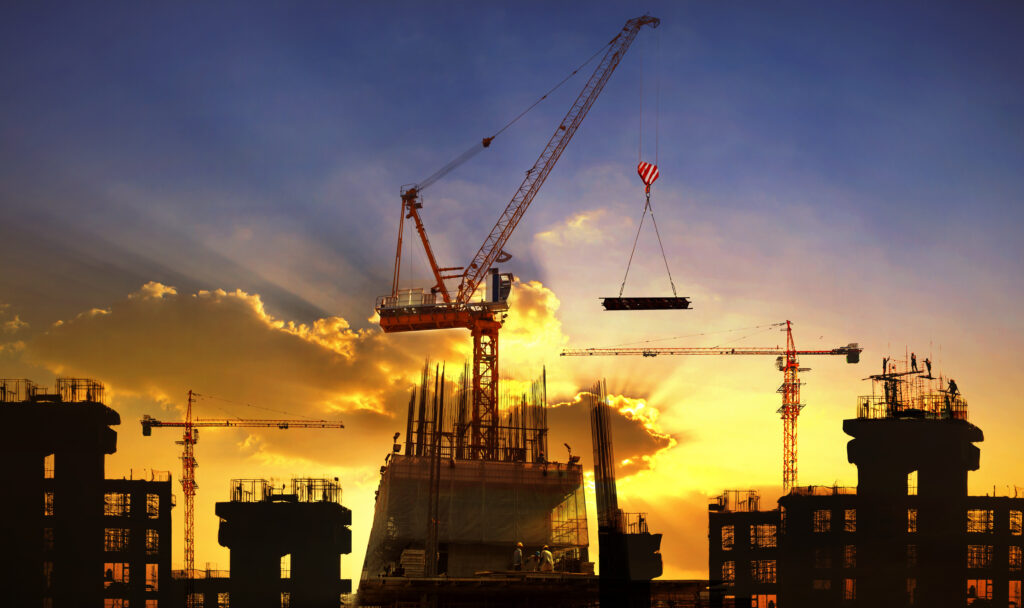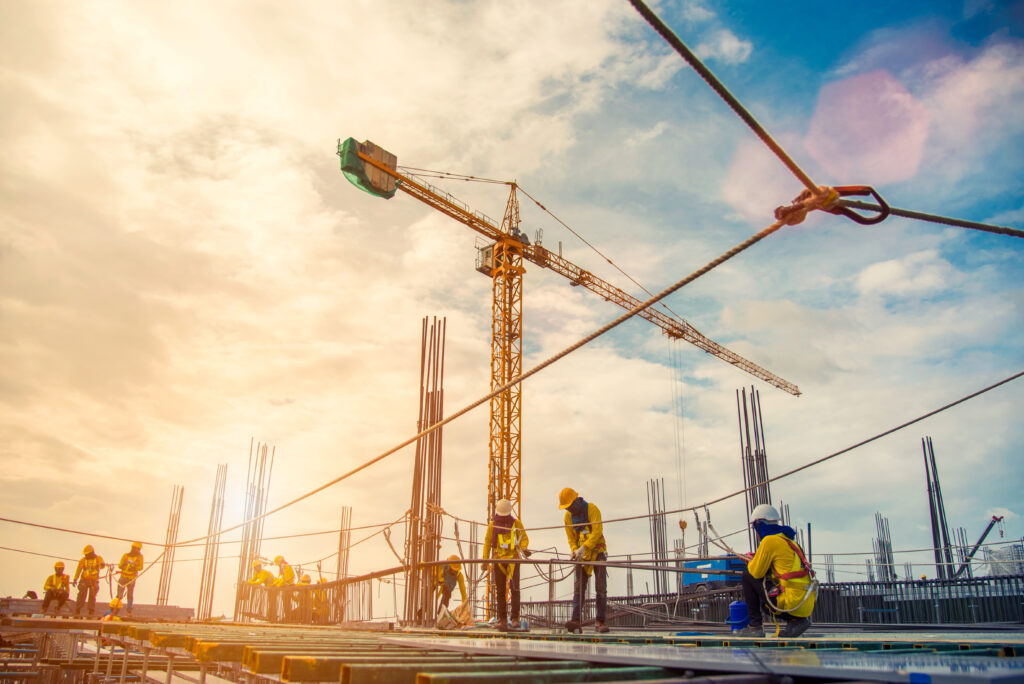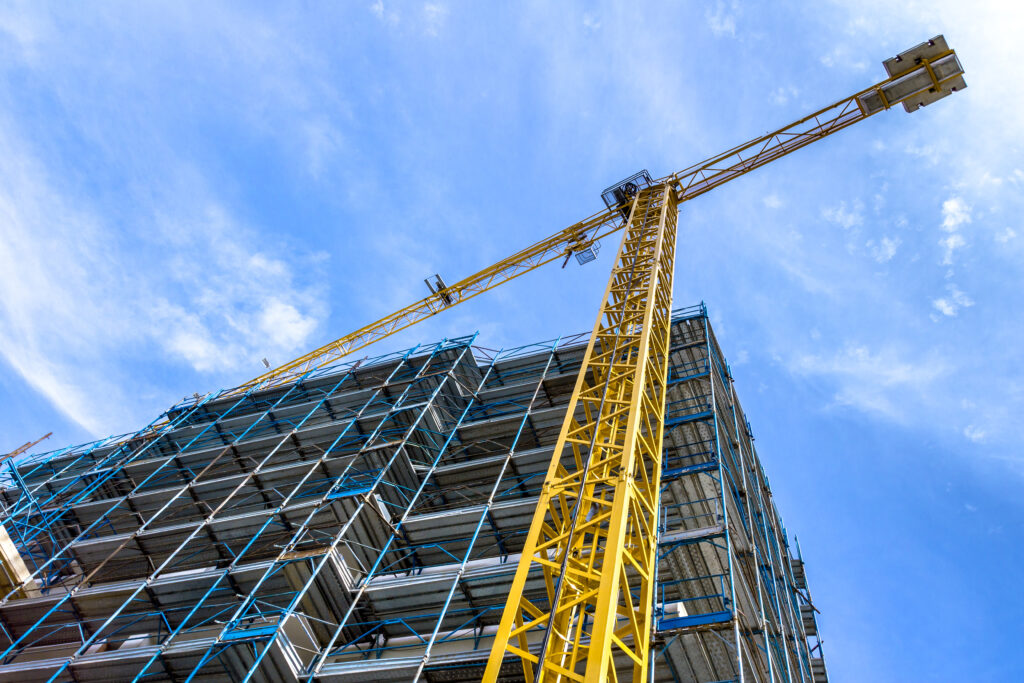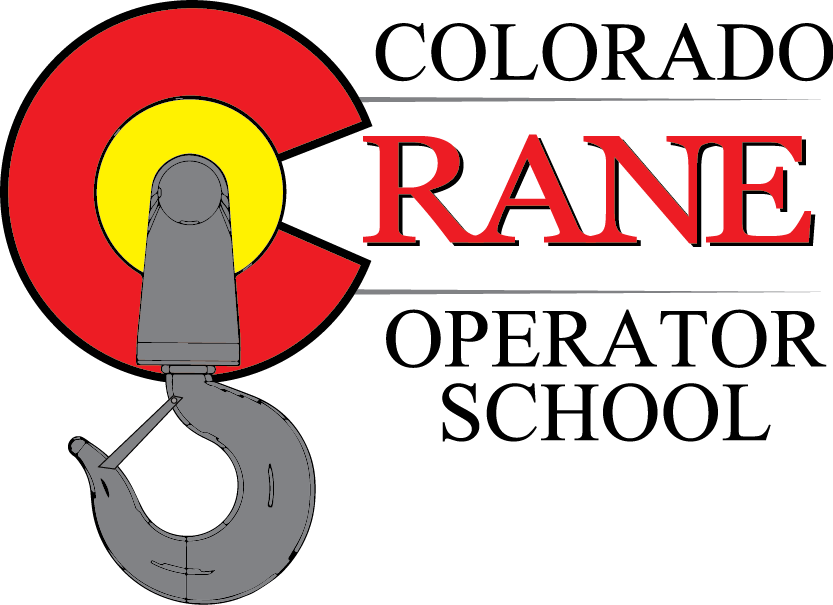
Tower cranes are a common sight in modern cities, thanks to their ability to balance two crucial aspects: extensive reach and solid stability. Achieving this balance starts with the blueprint, guided by standards like ASME B30.3 and ISO 4301-3:2021, which set the minimum requirements for safety and performance.
Structural Stability
A tower crane acts like a slender cantilever, meaning its mast (tower) must be strong in bending and torsion while still light enough to be assembled in sections. Designers first consider wind: the B30.3 design requires the structure to withstand gusts during operation and an “out-of-service” condition—where the jib can freely rotate—up to about 45 mph (20 m/s) before shutdown. Key stability features include:
- A ballasted base or climbing collars to handle overturning moments.
- High-strength, low-alloy steels matched the slender mast lattice geometry.
- Tie-ins that transfer horizontal loads into a building frame on high-rise projects, allowing the crane to “climb” safely as the structure rises.

Lifting Capacity
ISO 4301-3 classifies tower cranes by load spectrum, cycles, and duty class, providing engineers with parameters to select slew bearings, hoist winches, and wire rope diameters that can endure decades of cyclic loading. Capacity charts reflect three design limits:
- Structural limits (mast/jib stresses)
- Stability limit (moment of the slew ring)
- Mechanical limit (hoist or trolley motor torque)
For example, a hammerhead crane might lift 20 tons at a 66-foot radius but only 2 tons at 197 feet. Designers adjust the jib length, counter-jib ballast, and trolley travel to fit the project’s specific needs.

Integrated Safety Systems
Modern tower cranes incorporate multiple layers of protection:
- Load-moment indicators (LMI) that prevent overload by locking out hoist or trolley drives.
- Anti-collision zoning for congested urban jobs.
- Redundant emergency-stop circuits on hoist, trolley, and slew.
- Beacon lights and anemometers that alert crews when wind speeds approach shutdown thresholds.
ASME B30.3 formalizes these requirements and mandates a major inspection every 60 months, which may include dismantling slew rings and non-destructive testing of key welds.
Erection, Climbing & Dismantling
Design for assembly is crucial:
- Self-climbing frames jack new mast sections through the turntable without dismantling the jib, minimizing street closures.
- Pinned, modular mast sections keep site bolting torque within ergonomic limits.
- Re-usable anchor stools simplify ground-based setups on repeat projects.
Each stage—erection, climbing, and final dismantling—must follow the manufacturer’s procedure and B30.3/ISO checklists to maintain structural alignment and bolt preload.
Materials & Corrosion Protection
Galvanized or epoxy-coated high-strength steel is preferred for its predictable ductility and proven fatigue life over tens of thousands of load cycles. Critical fasteners are usually 10.9 or 12.9 alloy bolts with traceable certificates; pins and bearings are induction-hardened for wear resistance.
Common Tower Crane Types
| Type | Typical Use | Distinguishing Design Feature |
| Hammerhead (Top-slewing) | General high-rise construction | Horizontal jib with trolley for reach; counter-jib carries hoist machinery |
| Luffing-jib | Dense urban cores with over-sailing restrictions | Articulating jib minimizes over-swing; higher in-service wind capacity at short radii |
| Flat-top | Fast-track projects & overlapping cranes | No pendant ties; quicker erection and reduced component height |
| Self-erecting | Low- to mid-rise residential | Integrated base and mast; hydraulic unfolding for rapid setup |
Maintenance, Inspection & Service Life
Daily pre-shift checks, monthly functional tests, and the 5-year major teardown required by ASME B30.3 form the backbone of a preventive program. Studies show no direct correlation between calendar age and accidents when maintenance is diligent, yet rising overhaul costs mean cranes often leave service after 10-15 years, even though well-maintained units can operate safely for several decades.

Final Thoughts
For project owners, selecting a tower crane is more than chasing maximum tip capacity. A properly classified crane matched to the site’s wind climate, load profile, and growth sequence will deliver reliable lifts day after day—provided it is erected by certified crews, inspected to B30.3 and ISO 4301-3 intervals, and derated when weather dictates.
In short, tower crane design is an elegant negotiation between physics and practicality, and adherence to globally recognized standards remain the surest path to keeping the skyline and everyone beneath it safe.
Colorado Crane Operator School specializes in crane training, rigger training, and NCCCO certification. We offer a variety of programs, including a four-week and three-week crane operator/rigger & signalperson program, certified rigger and signalperson workshops, and articulating boom crane workshops. The school provides training programs near Denver, CO, and can travel nationwide to offer customized training programs for personnel and equipment requirements. We also provide crane and rigging inspections through our subdivision, Crane & Rigging Consultants, which meets the requirement criteria outlined in OSHA Subpart CC – Crane Standard and ASME B30.5, Mobile cranes, and ASME B30.3, Tower Cranes. We are known for making learning enjoyable and information simple and easy to understand, all while maintaining a high level of quality.
- Written by Tim Gauna Colorado Crane Operating School




